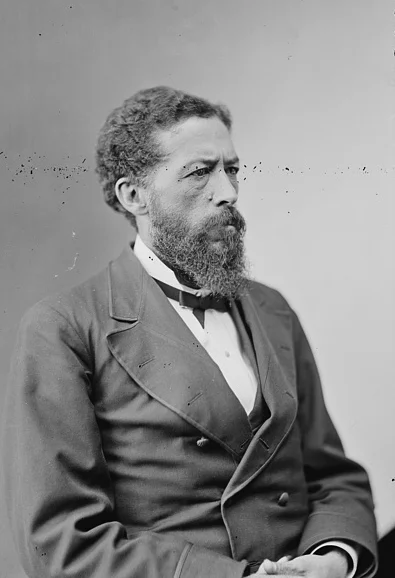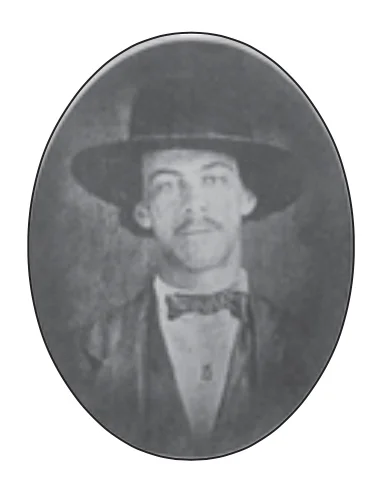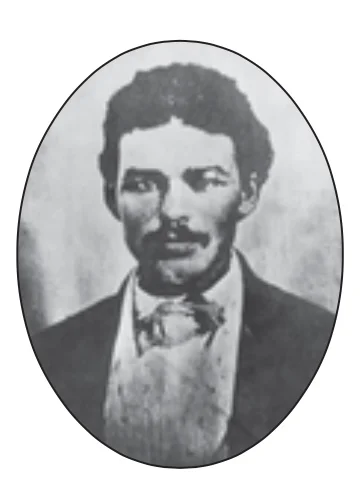Charles Langston (Grandfather of Langston Hughes)
Subscribe to us on:
(Checkout our books on Amazon)
Charles Henry Langston was born in 1817 in Louisa County, VA. His mother’s name was Lucy Jane Langston and his father was a slaveowner named Ralph Quarles. Ralph Quarles had served in the Revolutionary War and was, as we have said, a slaveowner. He had a baby with Lucy Langston and, after the child was born, he freed both Lucy and their baby.
The two, later on, had three additional children:
Gideon Quarles,
Charles Henry Langston and
John Mercer Langston
Charles Langston would grow up to become a well-known activist, an educator, a freedom fighter and the eventual grandfather of the world-famous poet Langston Hughes.
John Mercer Langston, younger brother of Charles Henry Langston. Library of Congress.
Charles’ younger brother, John Mercer Langston, would go on to become the first black lawyer in Ohio, the first black person to be elected to the United States Congress from the state of Virginia and one of the most famous black politicians in the nineteenth century.
Although Charles’ younger brother and his grandson would become much more famous than he was, his life, if you ask me, was far more fascinating.
In 1834 both Lucy Langston and Robert Quarles died. In a very unusual move, Ralph Quarles left the better part of his estate to the three sons he had with Lucy Langston. In this way Charles, Gideon and John all became heirs to a good portion of their father’s estate and they were eventually taken to live with a friend of their father’s in Ohio.
The year was 1834 and Oberlin College, in Ohio, had just been established the year before—it was one of the only colleges in the United States that accepted both African Americans and women.
Charles and his older brother, Gideon, thus became the first African Americans to be admitted into Oberlin College. Here he was at age 17, born in Virginia (a slave state) and he now was attending college in one of the ONLY colleges in the United States that would admit black students.
Charles and his brother soon became graduates and, armed with his college degree, Charles became an educator and an activist.
He became the Executive Secretary of the Ohio Anti-Slavery Society and joined a number of other organizations as well.
The most famous example, however, of his activism took place in 1858 and 1859. A young man named John Price, who was about 18, 19 or 20 years old, had escaped from slavery and was hiding out in Oberlin, OH. He was staying with a man who helped escaped men and women, when they came to that area. Price was approached by a white young man in September of 1858. The man told Price that his father had work that could be done on his farm and that if Price needed the extra money he could come do the work. Not thinking that this was in any way a trick, John Price went with the young man.
Once they got in the wagon and were on the road, a group of slave-catchers jumped out from the side of the roadway and captured John Price. They took Price to a town called, Wellington, in order to eventually transfer him back into slavery.
By chance another man saw them on the road as they were on their way to Wellington and he ran to Oberlin to alert everyone. He ran into shops and businesses yelling, “They got one of our men! They got one of our men!”
Almost immediately men began to gather to demand that something be done. They got together their guns and their riffles and some 500 of them started out on the road toward Wellington. Among them, and one of the leaders of the group, was Charles Langston.
When they got to Wellington, Charles and others tried to negotiate with the authorities, but to no avail. The authorities would not let John Price go. When it was clear to the armed men that the negotiations had failed, many of the men simply rushed the building—they pushed aside the guards and made their way through the hallways. Apparently the slaveowner who was looking for Price was there as well, but everyone simply stood aside. No one inside the building wanted to fight against an onslaught of 500 armed men. The door to the room where Price was being held was unlocked from the inside and Price was taken back to Oberlin without one shot being fired.
The people in Oberlin celebrated as the hundreds of men came back with Price in a wagon. This event, of course, drew national attention and authorities came into town and arrested dozens of men whom they believed were involved—Charles Langston was one of them.
After much back-and-forth between the supporters of anti-slavery causes and the federal government almost ALL of the rescuers were eventually not taken to trial, with the exception of Charles Langston and Simeon Bushnell.
Simeon Bushnell was tried first and was convicted and sentenced to sixty days in prison (and fined). Charles Langston was tried next.
It was 1859 and, while all of this was going on, John Brown came to Ohio. He was there to visit his son, who lived in Ohio and he wanted to find additional men who might join him in his plan to raid the arsenal at Harpers Ferry later on that year. When Brown got to Cleveland the town was abuzz with the news of the trials of the Oberlin Rescuers. John Brown actually visited Charles Langston while he was in jail and reportedly helped to auction off his livestock.
Lewis Sheridan Leary died in the raid on Harpers Ferry in October of 1859. He left behind his wife, Mary Patterson, and their six-month-old daughter. Mary Patterson would later marry Charles Langston and become Langston Hughes' grandmother.
Brown, as we mentioned, wanted to find men to help him with his upcoming raid and he sent his son out to find if there were men who could be recruited. Brown’s son went to John Langston (Charles’ younger brother) and asked him if there were any men whom he thought might be willing to join them. John Langston told him that two men might be willing to join them. They were Lewis Sheridan Leary and John Copeland, Jr.
Lewis Sheridan Leary had a wife named Mary Patterson and they had a six-month old daughter. Leary left behind his wife and daughter and went to Harpers Ferry. Leary would be shot in the stomach and die as a result of the raid and Mary Patterson became a widow. Mary Patterson would later go on to marry Charles Langston and she would become the grandmother of Langston Hughes (who would raise him for many of his childhood years).
Now, getting back to the 1859 trial of Charles Langston.
John Copeland Jr. was also a part of the raid in Harpers Ferry. He was the nephew of Lewis Sheridan Leary and was executed in December of 1859. On the day of his execution he said, "I am dying for freedom. I could not die for a better cause. I had rather die than be a slave.”
Charles Langston as we have mentioned was on trial for participating in the Oberlin Rescue. He was tried and convicted. At his sentencing the judge asked him if he had anything to say before he was sentenced. Charles Langston delivered such an impassioned speech that the attendees erupted in applause after he was finished. The judge gave Charles a lighter sentence of twenty days in jail.
Firmly committed to working against the institution of slavery, Charles Langston decided to move to Leavenworth, Kansas during the Civil War. Leavenworth, Kansas is right across the border from Missouri and during the Civil War thousands of African Americans left their places of enslavement and headed toward free areas of the country or toward Union encampments. Missouri was of course still a slave state even though it did not secede from the Union (and of course the Emancipation Proclamation did not apply to states that didn’t secede from the Union).
Therefore a stream of people who had been enslaved came across the border from Missouri to Kansas and Charles Langston went there to help.
When Charles got to Leavenworth he immediately was notified of the need for the children of the newly freed men and women to be educated. He started a school, which educated about 150 students. He ran the school, along with others, for three years before he transitioned, fully, to what would be his next area of contribution—that was working for the voting rights of black people in Kansas.
Charles Langston was a skilled orator, an effective organizer and a natural leader. He joined many organizations, within which he had a leadership role and he strategized with other men along the lines of what would be the best way to secure the voting rights of black men.
An example of this kind of organization took place during the Convention of Colored Citizens on October 17, 1866. There, in that meeting, Charles Langston was selected as chairman of the Executive Committee whose job it was to:
“superintend the movement now making among us in this State to gain political equality. (The Committee) shall employ agents to present our claims to the people, raise money to pay the expenses of the same, and to pay other expenses which in its judgment may be necessary. Said Committee shall hold meetings as often as may be deemed advisable, and shall, as far as possible, organize auxiliary Committees in each colored community. The Executive Committee…shall report its doings quarterly through the columns of some public journal.”
In addition to this charge for the Executive Committee, the men of this convention then outlined the laws that were discriminatory in the state.
They said:
"1st. By putting the word “white” in the first section of the fifth article of the constitution, colored men are denied the uses of the ballot, so our personal liberty, our civil rights, our property and legal protection, are all placed at the disposal of others. This is a sort of despotic class legislation of which we most bitterly complain.
The constitution makes the militia of your State consist only of white men. This article denies us the poor boon of uniting with you in repelling invasion or suppressing domestic violence.
Being denied the elective franchise, we are excluded from the jury box; and hence, when we are accused of crime, we are not tried by a jury of our political or legal equals.
In asking you to remove these disabilities, by which we are sorely and grievously oppressed, we approach you in the name of God, who has created of one blood all the nations of men.”
This is just an example of the kind of organization and efforts that were put forth in the fight to give black men the right to vote.
Charles Langston worked to bring about black suffrage in Kansas in the following ways:
by presenting, along with others, documents and evidence before the state’s legislature;
by debating and corresponding with state representatives and the governor;
by working with others to include black male suffrage in the Republican Party’s platform in 1866 (it was subsequently removed); and
by playing a leadership role in several organizations that working to bring about the right of black men to vote.
He was tireless in his efforts and, although these changes never specifically came about in Kansas until the nation’s constitution was changed, Charles Langston worked right up until the passage of the 15th Amendment.
As we have alluded to, Charles Langston married Mary Patterson (the widow of slain Harpers Ferry rebel, Lewis Sheridan Leary). They got married in 1869 and had three children. Their first child was Nathaniel Turner Langston, whom they named after the famous revolutionary Nat Turner. Their second child was Caroline Mercer Langston—she became the mother of Langston Hughes.
She married James Hughes and in 1902 they had Langston, on February 1, 1902 to be exact.
Langston Hughes grew up mainly with his grandmother, Mary, in Kansas until her death in 1915.
Charles Langston died in 1892 and, although he never got the chance to meet his famous grandson, Charles Langston lived a life dedicated to fighting for the rights of black people.
Copyright, 2017. Red and Black Ink, LLC.
References:
Correspondence of the N.Y. Tribune, “Kidnapping at Oberlin!—The People Excited.” The Liberator. October 1, 1858.
Convention of Colored Citizens (1866 : Lawrence, KS), “Proceedings of a Convention of Colored Citizens: Held in the City of Lawrence, October 17, 1866,”
ColoredConventions.org. Accessed May 2017.
Sheridan, Richard. “Charles Henry Langston and the African American Struggle in Kansas.”
The Oberlin-Wellington Rescue. Electronic Oberlin Group, Oberlin Through History. Accessed May 2017. http://www.oberlin.edu/external/EOG/Default.html




